
分散式自治實踐與研究者,尋找有別於電馭極權與財閥亂鬥的第三條路。喜歡討論,請別客氣與我討論。
NFT story collection | Can computational art be co-created?
Today I will share with you the stories of three Taiwanese generative artists who are about to write a big, possibly a lot, in generative art history this Saturday. The above is a bit exaggerated, but please listen to my dismantling layer by layer. I will analyze why what is about to happen next is very important in the NFT art circle and may change the way of art production.
The three Taiwanese are Wang Xinren (Aran), Lin Jingyao, and Lin Yiwen (Lin Ge).
They're going to fuse each other's code together and make something new.
Don't ask if NFT can be art, it can be, and it has been.
And it's evolving faster than you can imagine.
The story goes back to February this year, when the exhibition "Gaia" at the Taipei Museum of Contemporary Art opened, and both Aran and Huang Xin exhibited their works. Volume DAO members who were present at the meeting took a group photo in front of @Matt Deslaurier's work Meridian. Volume DAO is a group that buys computational art works day and night on the Tezos blockchain.
At that time, we also specially used the mobile phone screen so that Matt and Ringo who were far away in the UK could take pictures together, because they were good friends. (see photo)
This photo was later posted on Twitter and was picked up by fxhash officials. Maybe the person thought, "These people are very familiar, so I will find them to do things with them later."
After two months, Aran, Jingyao, and Brother Lin really want to do something together, called fx (collab), on this Saturday.
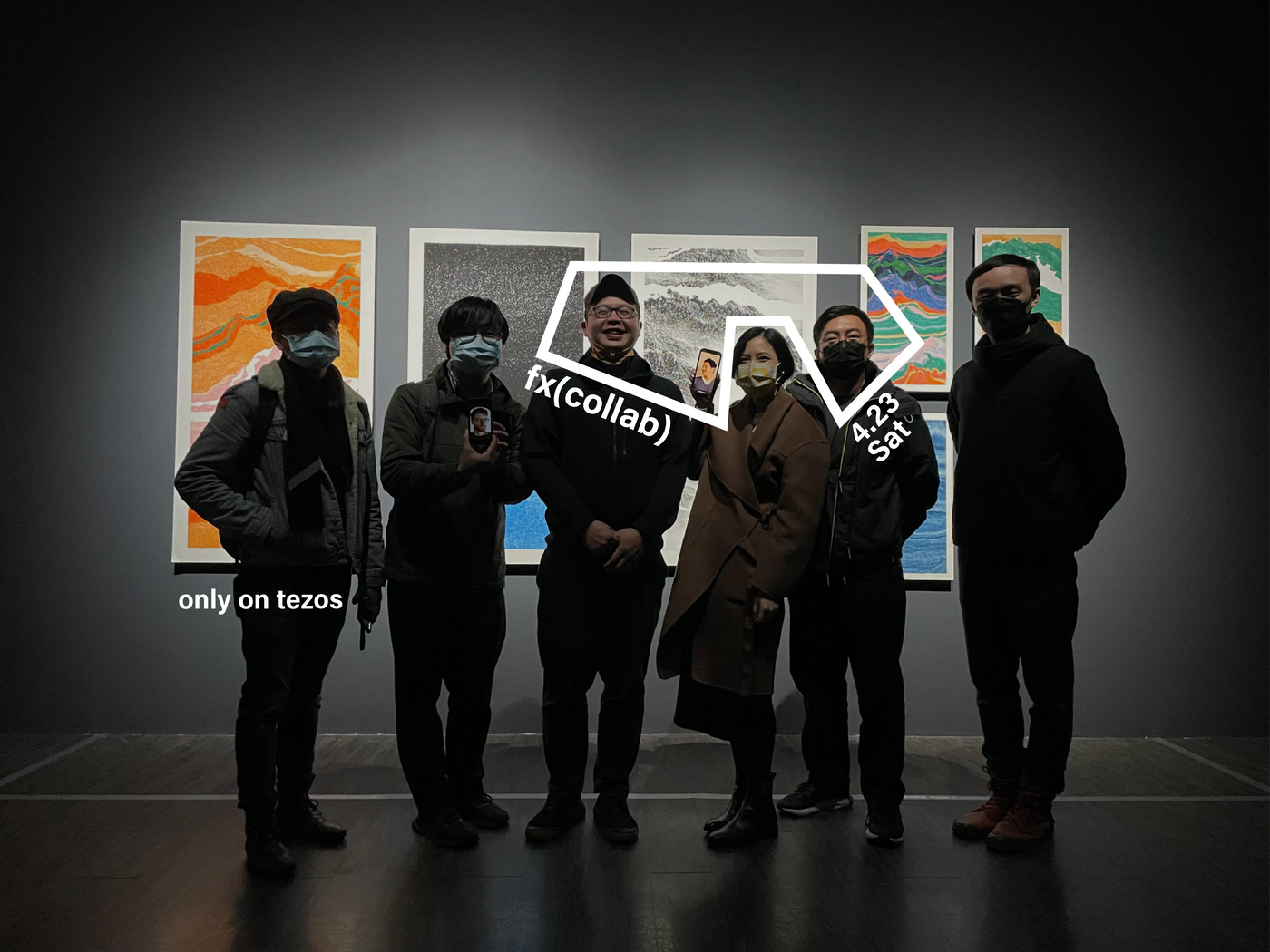
Explaining why these three guys are going to do things together makes me so excited.
The fxhash 1.0 version has been officially launched recently. Chaos Memory and Jingyao's new work Requim: Cloud both dominate the list, and the top five transactions account for two. (I have all my favorites to make me very happy)
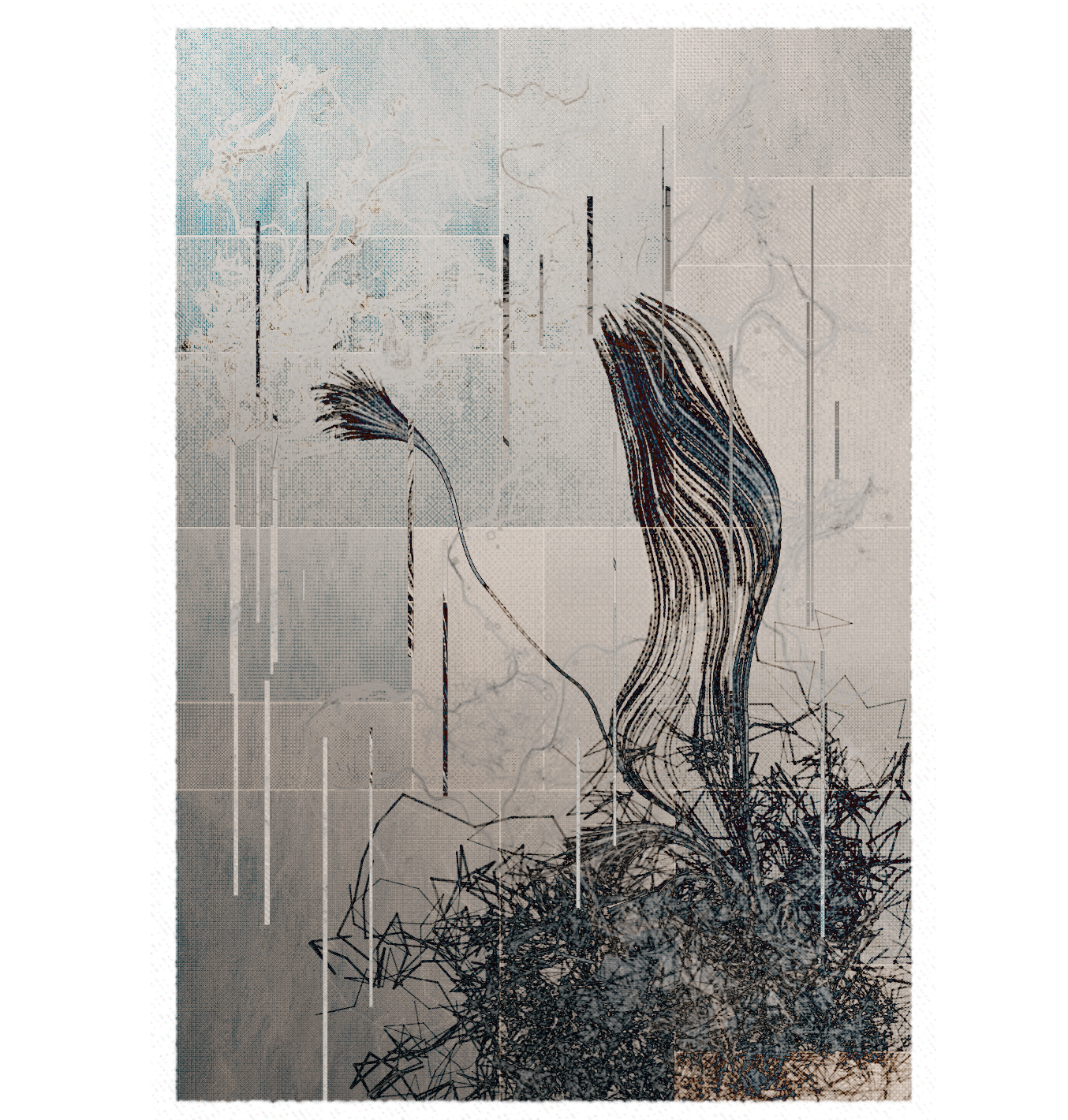
In addition to being happy for them by the trading volume, both works have been honed for a long time, and there are many puzzles hidden in them. Aran even made Chaos Memory into a cover photo and said that he would give it to me, but he could not be sure to put it on the chain... I enjoyed being a part of how these works were born.
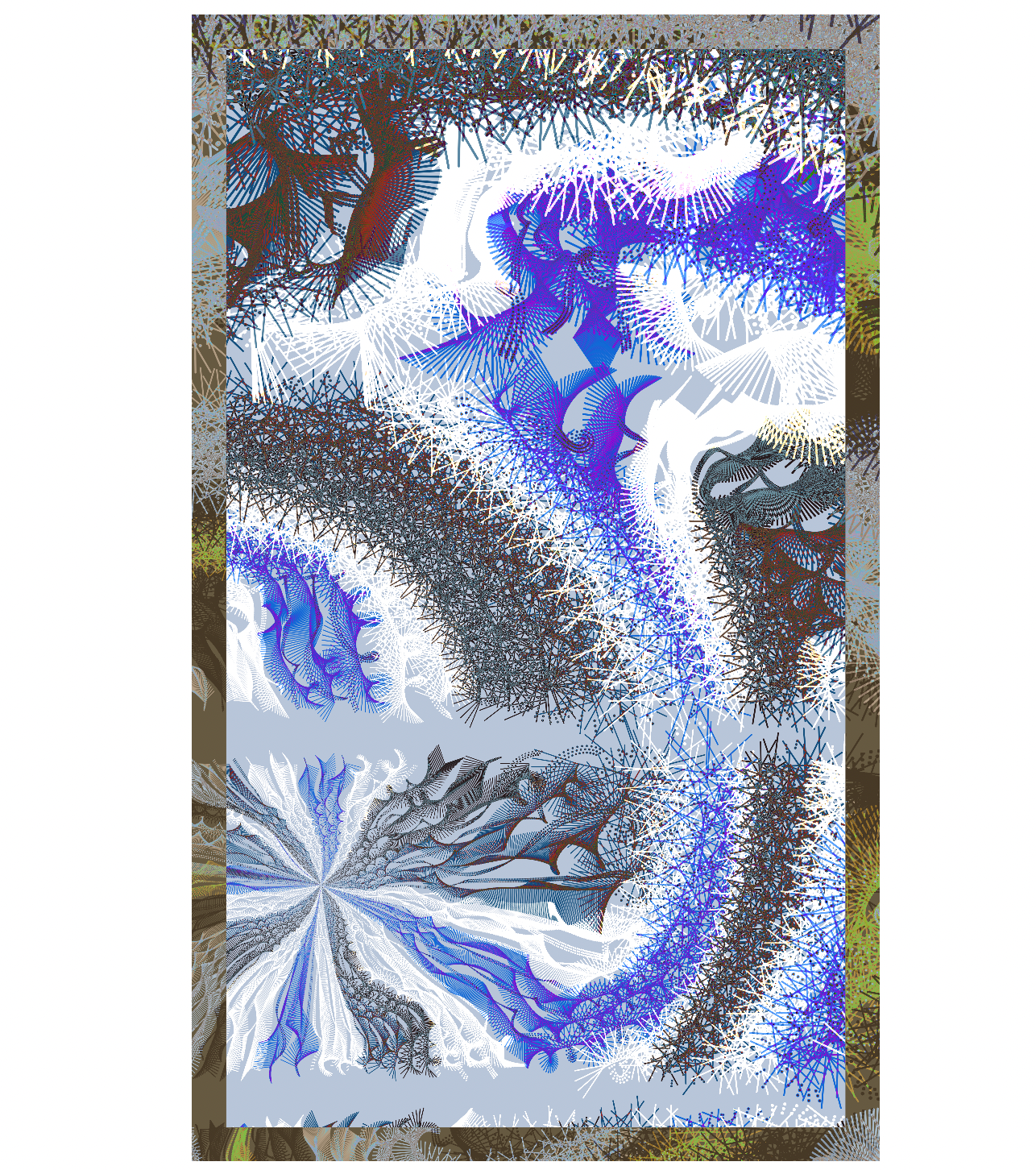
And these three people will integrate their respective codes to create a new work this Saturday. The Taiwan Generative Art Universe is about to be born.
Back to introduce fxhash .
fxhash is a generative art NFT platform on the Tezos blockchain, established by the French. I wrote an article last December , “The Big Wave of Generative Art, for Cathedrals or Flea Markets? , to analyze how Artblocks on Ethereum is different from fxhash on Tezos.
Self-quote: "If Artblocks is a cathedral, because of strict curation and censorship; then fxhash is a marketplace. One is fine generative art, the other is a flea market, and who knows what's in there? Treasure?" I was really looking forward to the development of fxhash, because everything was so organic and wild.
After four months, fxhash has really evolved. After a three-week suspension of service, fxhash ushered in a major upgrade and reopened last week as version 1.0. And Artblocks is the most advanced Curated new works almost sold out, and immediately broke (below the original price).
Has the golden cross arrived yet?
The long-awaited re-opening, the creators have accumulated nearly a month of practice, and the collectors have accumulated a month of impatience. Once the store opened, everyone was like a madman, adding and removing works from the shelves. Yesterday, the gas fee (the transaction fee to the miners) soared, and it was once 30 tez (about NT$3,000) to successfully buy the work. This is incredible in the world of Tezos, but you can also see the flea market boom here.
The new version of fxhash has several powerful features: co-creation of profit sharing, indefinite whitelist, and Dutch auction. Combined with the pre-existing built-in sales data tool, and later the DAO token, fxhash has become a well-equipped flea market.
Today we only talk about the function of collaborations.
Co-creation, as the name suggests, is a multi-person collaborative work. From the platform side, smart contracts can instantly distribute profits to collaborators. "Creators are valuable" is not a fake in the blockchain world. If there is an automatic profit sharing function, everyone who participates in the creation can be allocated a reasonable income.
The creator’s public participation is also very important to his reputation on the chain. After a long-term operation, the profile of the wallet and the platform is more real than a person’s resume. Co-creation and profit sharing is still a rare function on the NFT platform. Taiwan's akaswap has it, and fxhash should be the first platform that mainly supports generative art to support profit sharing.
Even, fxhash allows creators to distribute profits to collectors in the primary market. This will be a huge game changer for the generative art market. It is conceivable that the distribution of profits to buyers will promote the rapid completion of sales in the primary market, and at the same time, the relationship between collectors and creators will be closer and become a community of interests. web3 has always been a place to reward early supporters, and fxhash is a really cool trick.
In order to promote the co-creation function, fxhash officially led a series of artists to become idol groups, named fx(collab). The first combination launched is Zancan and Yazid. Needless to say, Zancan is the most popular artist in the entire chain, and its generative plant series has always been a high-priced item from Tezos; Yazid is also an Artblocks artist, and his work "Automatism" was just released at the end of March. Sold out at Artblocks.
As the first fx(collab) work, its joint work " (kinder)Garden, Monuments " has received a warm response. It was auctioned in the Dutch style. The total price in the primary market was 200,000 tez (about NT$20 million). The floor price of a single piece of work is NT$170,000.
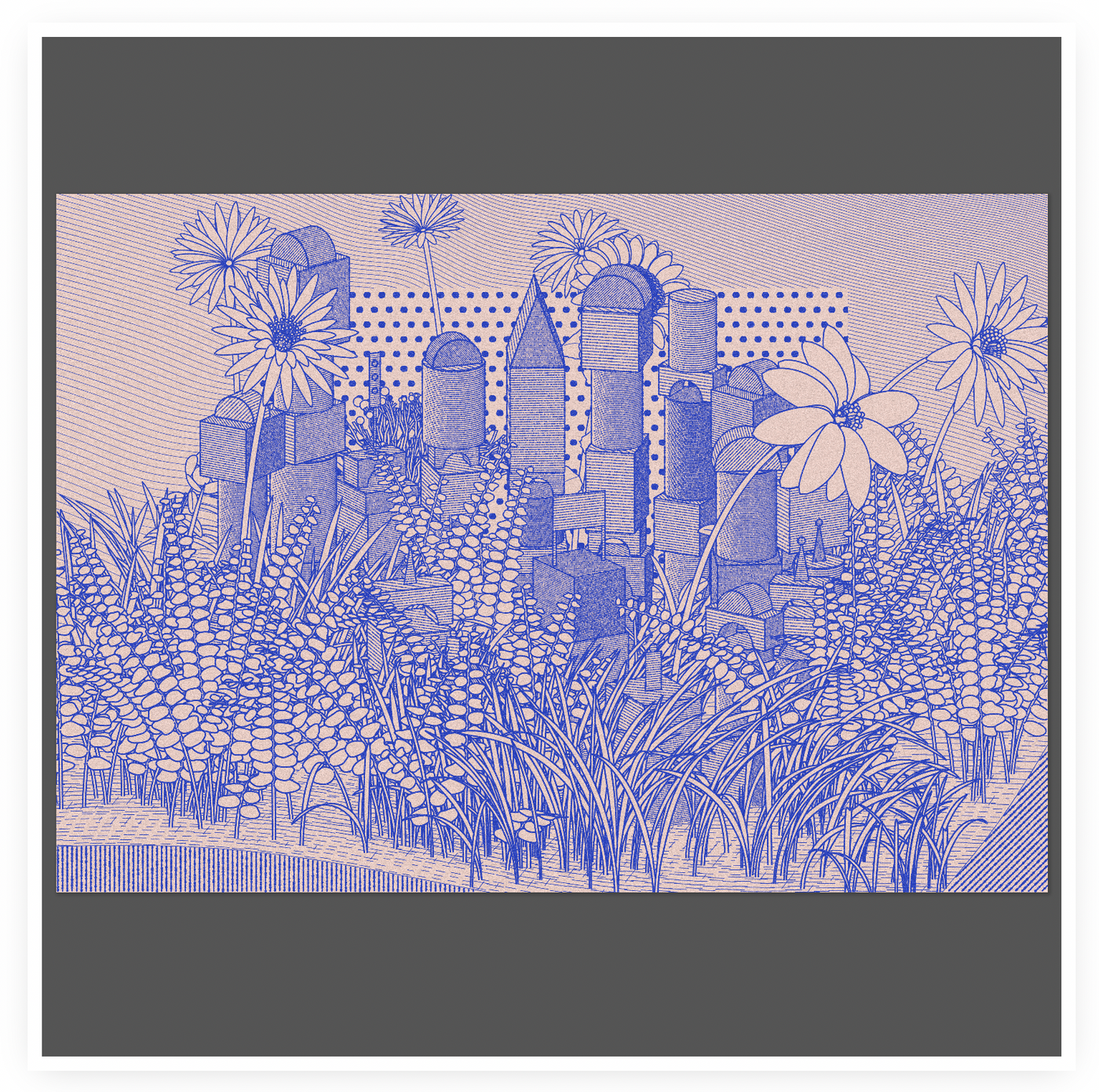
The work mixes Zancan's plants with Yazid's building blocks into a whole new narrative universe - (kindergarten) gardens and monuments.
When the art of arithmetic meets co-creation, it is not just as simple as sharing profits, it simply opens up a new world.
The code contributed by each person can be integrated into a work, and then the collector can cast the current seed code to cast a unique NFT-generated art work. From the work itself, you can see the shadows of different creators.
It can be a visual personal feature, or it can be sound, dynamics, or a lower level architecture.
Automatic profit sharing, normalizing "co-creation" in the market economy;
But what really implements "co-creation" into the creative process is generative art.
It's as if everyone wrote a sheet of music together for the robot to play.
The good guys can even look at the code to determine which visual features come from which author's usual narrative system.
If NFT is a canvas and the seed code generates randomness, then the code provided by each co-creator is a different brush, creating a common control system. Let the dice roll forever in the system.
This is the co-creation of computational art.
Back to the protagonists of this story.
As the second echelon of fx(collab), the pressure behind Zancan is huge. But there is a lot to like about this collab.
The three creators are all Taiwanese. In the past, they just looked up to each other and didn't know each other. They met because of fxhash. All three of them put a lot of effort into fxhash and grow with the platform. Gradually become the hegemon of one side.
I don't need to mention Aran's popularity. In addition to being an Artblocks artist, he also participated in the establishment of the AkaSwap platform, and later released the TezDozen avatar project. Amei's NFT, Aran, is also behind the design. Even his work has recently been the subject of inquiry in the Legislative Yuan.
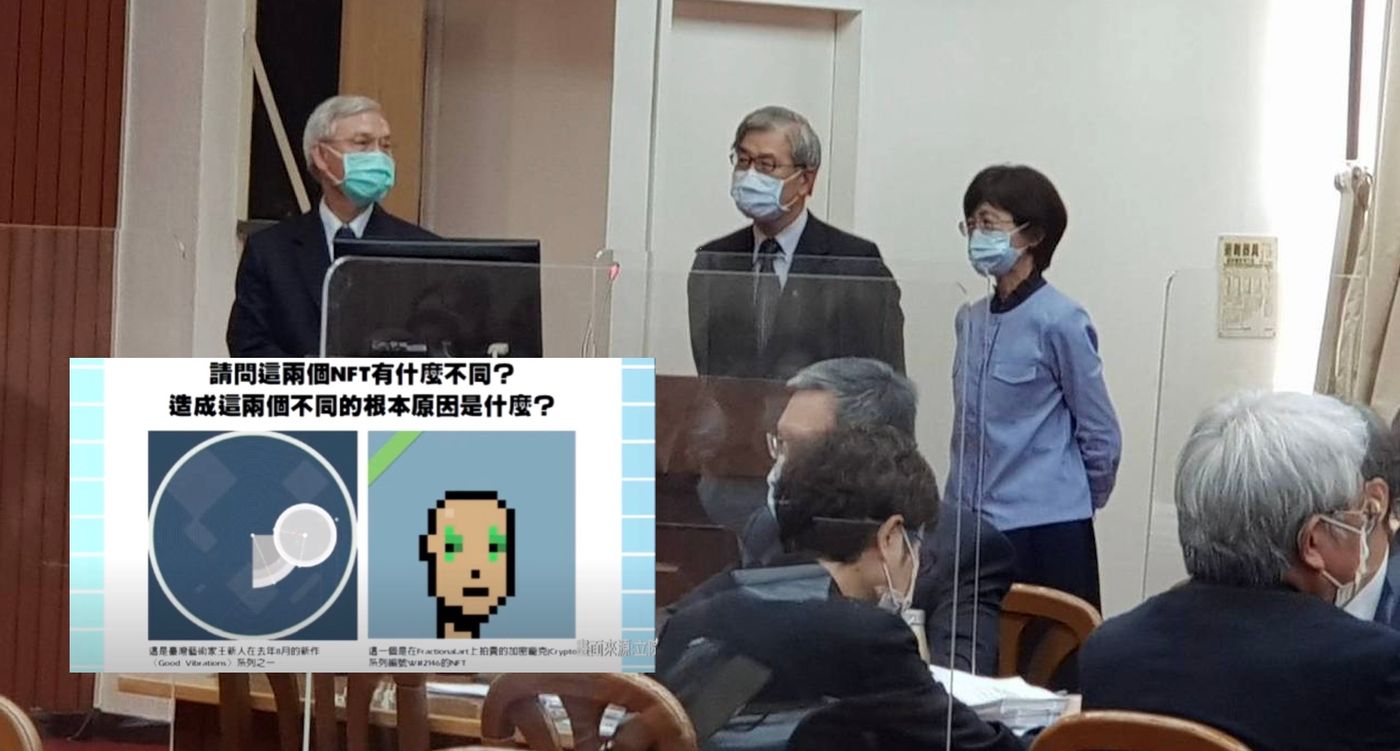
Jing Yao is an assistant professor at Nanyi University. His career as an NFT creator can be said to have grown up with fxhash. From the simple sound works in the early days to the complicated and gorgeous Cloud series in the back, the unit price and sales volume have been rising, twitter tracking The number has exceeded 3500. This kind of super incentive loop makes Jing Yao's works evolve at an amazing speed. He was doing exercises when he really had nothing to do, and he asked others how the work was going and what the name was, and he was simply obsessed.
And Ringo, based in London, a former interactive artist/handler (and still is), has finally made himself a full creator thanks to fxhash. Originally, we didn't know him. It was because Brother Lin posted works on fxhash that we were able to know this Taiwanese across the sea. I really miss the days when every piece of work was put on the shelves and there was still time for research. fxhash has grown too much, and hundreds of new works are dizzying every day.
Brother Lin said that after he posted his fxhash works, he knew more Taiwanese than he had in the previous ten years. Ringo was originally a prolific interactive artist in Paris and London, and his European friends didn't jump when Tezos NFT started growing last year; when Matt got jaw-dropping sales results with Artblocks, he didn't jump off; When fxhash came out, it finally entered the process of crazy creation. At present, the number of followers of Lin Ge will exceed 10,000.
The generative art work created by the three Taiwanese, this time is obviously against the mainstream market, perhaps it can be called the West, this time they use the characteristics of Japanese-style washi (wagami) collage to integrate the textures that the three artists are best at .
Aran's fibers, Jingyao's piercing clouds, and Lin Ge's hexagons are scattered in the shapes of mountains, rivers, and flowers.
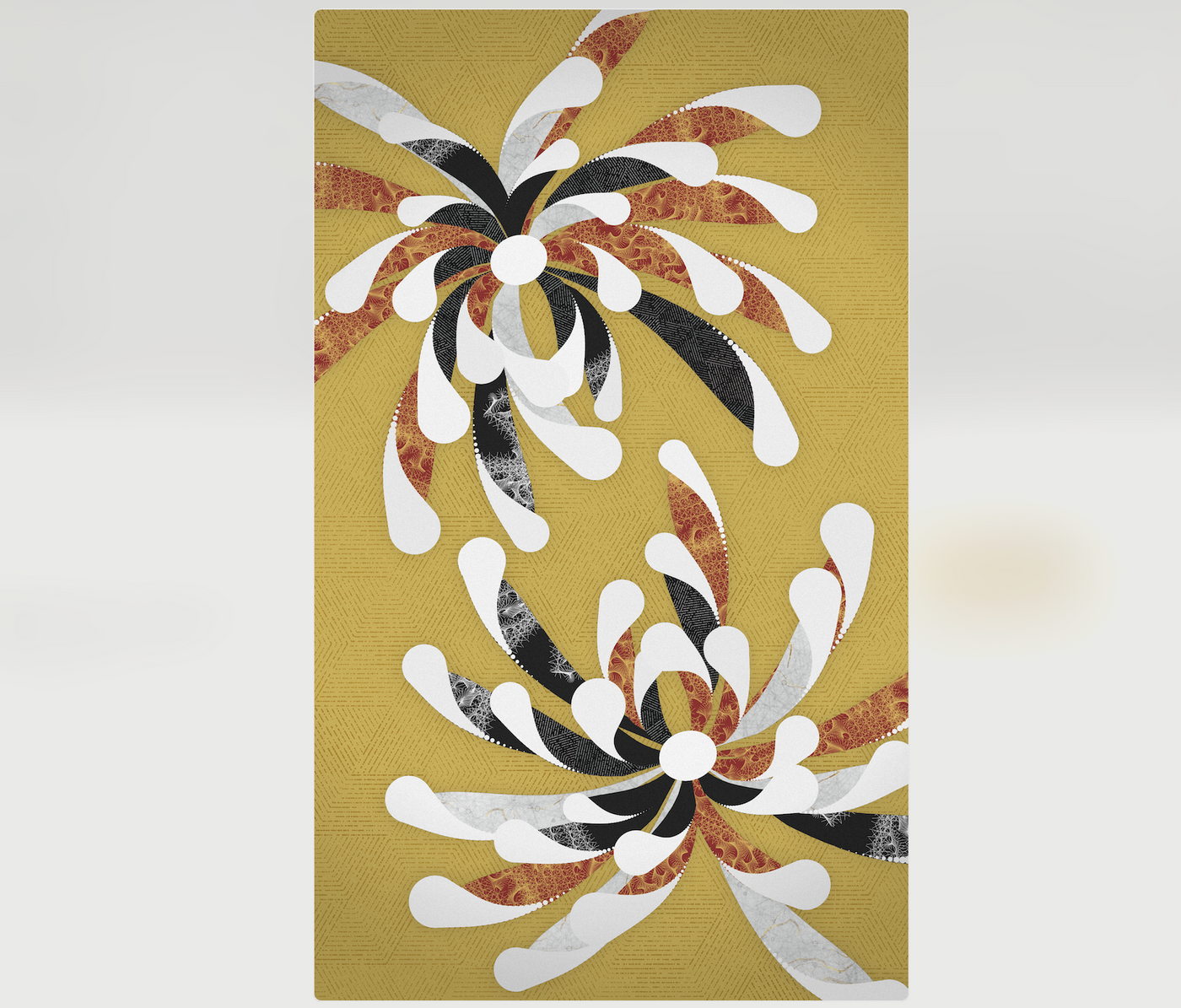
During the interview process with the three artists earlier, what surprised me the most was actually “dissatisfaction”.
Aran and Jingyao were still dissatisfied even though their works were sold out. Dissatisfied with the silence of collectors, NFT did not create dialogues, and dissatisfied with his masterpieces buried in a large number of simple and easy-to-understand studies. Brother Lin's previous blow to break the market made self-doubt about the lack of technology and the indifference of the market. The market once held up creators high, but also broke creators.
The three artists began to discuss the preferences of the NFT art market, and also entered into the differences of views between Eastern and Western aesthetics. This co-creation also left a lot of blank space, which can be said to be a challenge to the mainstream market. Even though the three artists are already some kind of mainstream, they still challenge existing perceptions in their new works.
As for the system of the three creators, how do they fit into each other?
I originally thought that creators of computational art were lonely seekers, and that all settings should be submitted to their own systems, and each system presented the creator's microcosm. If we want to cooperate, there may be conflicts. Cooperation requires endless compromise, humility, persistence, and understanding.
Unexpectedly, this co-creation process is almost seamless and silky. Each piece of code has its own task area. And each creator has a clear assignment of tasks. As Aran said, they have already adapted to team work because of their past experiences. And generative art can of course be split into team work. After all, Library and various tricks are also the efforts of various predecessors.
Because of the characteristics of the tool, algorithmic art can iterate rapidly and continuously, and the rookies use the trees of the previous species; and the invention of the co-creation mechanism makes the iteration become the present progressive, so that the creators can influence each other in the same work.
Finally, a quarter of the co-created works will be donated to FAB DAO (Formosa Art Bank DAO). This is definitely not a small sum, thanks in advance to the three artists. FAB DAO has already planned large and small public welfare projects on Tezos. Of course, it will make good use of this fund to help more non-profit organizations and create greater social influence.
FAB DAO, Formosa Art Bank DAO, is a non-profit NFT autonomous organization. Focus on non-profit NFT casting, and blockchain public welfare education. Aggregate organizations and individuals to create a cross-domain community of public welfare, culture and art.
As for whether Ethereum will have a generative art co-creation and public welfare mechanism, please look forward to the Baiyue project next month.
In conclusion, fxhash has allowed me to witness the rapid evolution between the art market, collectors and creators. The dialogue is not necessarily direct, but all kinds of scrutiny, dissatisfaction, and suspicion are definitely part of the dialogue.
The innovation of the co-creation mechanism this time is not only an update of the underlying smart contract. It affects social behavior from the front-end interface, creates a new creative form for algebraic works of art, and further affects the creator's creative logic and interaction. relation.
Taiwanese artists are fortunate enough to be a good case of co-creation, depending on the sales this Saturday, no matter what, they will leave a mark in the history of the fxhash platform.
Like my work?
Don't forget to support or like, so I know you are with me..
Comment…